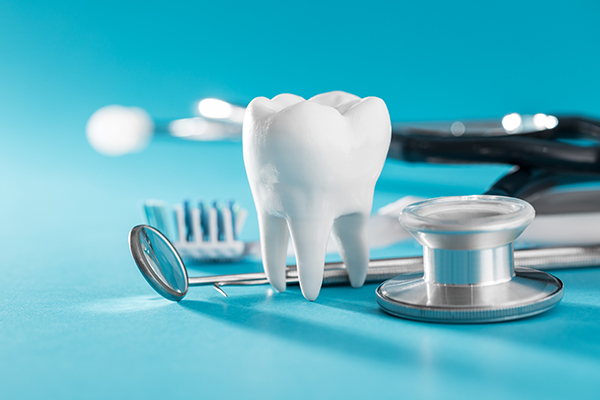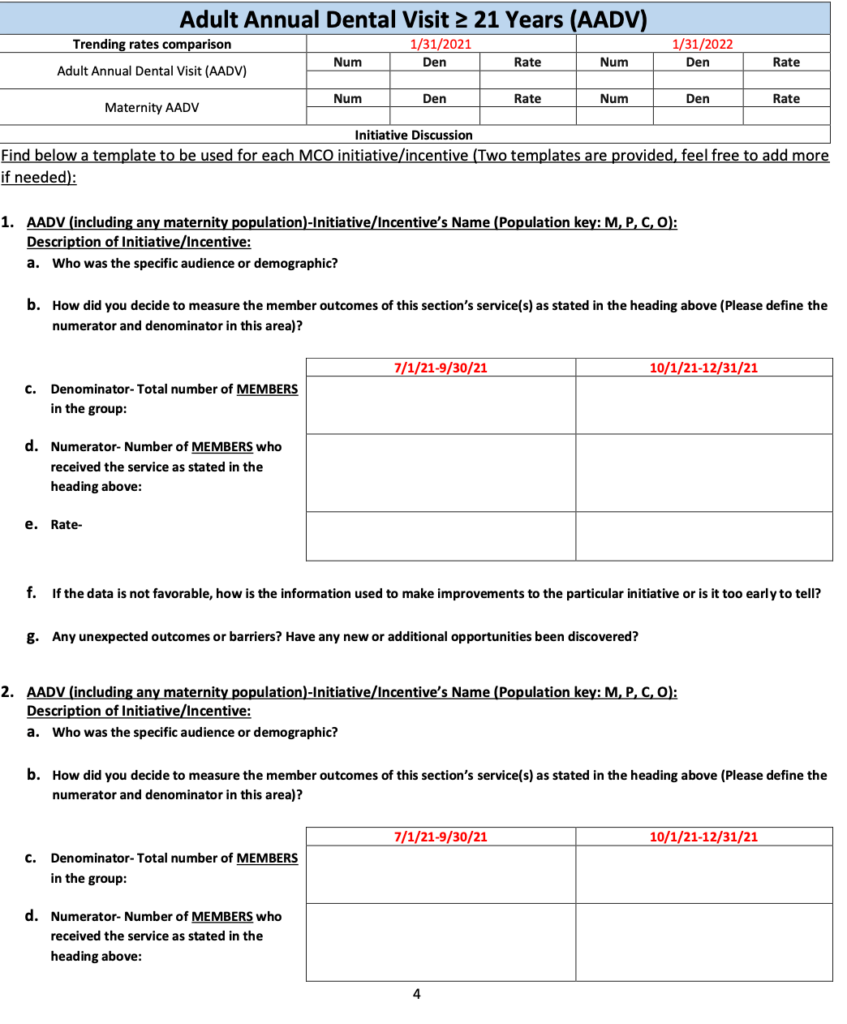COVID-19 has greatly impacted dental care and oral health access in the United States. From closed offices to an increased need for personal protective equipment (PPE), states and providers are both facing challenges to connect patients to dental care. With reduced tax revenue and looming budget crises, states are also facing difficult budget decisions – despite the knowledge that dental benefits can lead to health care savings.
As states confront these challenges, they are using innovative solutions, such as teledentistry, to support providers and connect patients with dental care.
In March, 2020, the Centers for Disease Control and Prevention and the American Dental Association (ADA) released a joint recommendation halting elective dental procedures. As a result, during March and April, over half of all dental workers lost their jobs – accounting for 35 percent of all lost health care jobs during that period. The Health Policy Institute at the ADA estimates that dental care spending will decrease by 66 percent in 2020 and 32 percent in 2021. As states reopen, many have allowed dental practices to resume elective dental procedures, but the ADA recommends the highest level of PPE for dental providers, and the Federal Emergency Management Agency (FEMA) has prioritized PPE supplies for dental providers .
Economic Downturns and Medicaid Dental Care
COVID-19’s impact on the economy will also affect how states provide dental care. Currently, state Medicaid programs are required to cover dental care for children under age 21, but 35 states and Washington, DC also cover dental services for adult Medicaid enrollees. During challenging economic times, such as the Great Recession, states historically cut optional benefits in their adult Medicaid programs. Between fiscal year (FY) 2010 and 2012, 19 states rolled back dental coverage for adults and only eight states have restored their programs between 2013 and 2016.
States are currently expected to face a $290 billion dollar shortfall in FY 2021. Medicaid makes up a large portion of state budgets and is expected to be impacted by state budget reductions in the next year. The Families First Coronavirus Response Act provides a 6.2 percent increase in the Federal Medicaid Assistance Percentage (FMAP) – the federal government’s share of most Medicaid expenditures –creating an influx of federal dollars to states. The FMAP increase also requires that states continue their current eligibility criteria under Maintenance of Effort, a challenge for states as they work to balance budgets.
Some states are prioritizing dental coverage during budget cuts. For example, Maryland’s Gov. Larry Hogan has proposed a $1.45 billion dollar budget cut, but is delaying implementation of postpartum dental coverage in Medicaid rather than cutting the program. West Virginia also is moving forward with implementing a comprehensive adult dental benefit in its Medicaid program.
Support for Dental Coverage in Medicaid Programs
CARES Act Provider Relief Fund. The Provider Relief Fund provides $15 billion to providers, including dentists, who participate in Medicaid and the Children’s Health Insurance Program (CHIP). Dentists can be reimbursed 2 percent of their annual reported revenue from patient care from the fund. The purpose of the fund is to cover expenses lost as a result of COVID-19 and can be used to cover additional expenses like PPE, COVID-19 testing, data reporting, and workforce training.
The US Department of Health and Human Services (HHS) extended the relief fund deadline to Sept. 13, 2020, based on feedback from providers. HHS also plans to release a simplified application form for providers. States can work with managed care organizations and Medicaid providers to raise awareness about the opportunity.
- California’s Medi-Cal Dental Division sent an email to stakeholders reminding them about the opportunity to apply for funding through the Provider Relief Fund.
- Texas Gov. Greg Abbott encouraged Medicaid and CHIP providers in a press release to apply to the fund.
If future federal dollars become available to support providers, states can continue to advertise these opportunities with their stakeholders.
Rewarding dentists who accept Medicaid. As states make difficult decisions about their budgets, several are moving forward with Medicaid rate increases for dental providers. These actions are designed to increase the number of dentists who accept Medicaid and ensure network adequacy for consumers.
- Kansas recently included $3 million in its FY 2020 budget to increase reimbursement for dental providers. Previously, dental providers in Medicaid had not received a reimbursement increase since 2001 and Kansas’ state plan amendment was approved by the Centers for Medicaid & Medicare Services in 2019. This year, the state is appropriating an additional $3 million to reimburse dental providers participating in the state’s Medicaid program, KanCare.
- Louisiana included $2 million in its FY 2020 budget to increase reimbursement for Medicaid dental providers. Louisiana Medicaid promulgated an emergency rule to increase reimbursement for dental exams for children up to age three and restorative dental services.
Use of Teledentistry to Address Gaps in Access to Care
Telehealth can be a tool for patients to stay connected to care when social distancing and stay-at-home orders are in effect. According to the ADA, teledentistry is “the use of telehealth systems and methodologies in dentistry” and can include live, two-way video interaction, storage of digital information, and remote patient monitoring and mobile communication. Teledentistry can be used for consultation and patient education and pain management, and it also can reduce transportation barriers and increase access. This delivery service requires an upfront investment in infrastructure that can be a barrier for service.
Due to COVID-19, 17 states have updated their Medicaid program guidance to include coverage and reimbursement for teledentistry. The Center for Connected Health Policy is tracking state action on telehealth, and new state Medicaid teledentistry guidance is highlighted in this table.
Updated State Medicaid Teledentistry Guidance in Response to COVID-19
| Teledentistry Service | States |
| D0140: Limited oral evaluation – problem focused. | Illinois, Iowa, Kansas,* Louisiana, Nebraska, New Jersey, North Carolina, North Dakota, Pennsylvania, Tennessee,* Utah, Washington, DC, Wisconsin |
| D0170: Re-evaluation – a limited, problem-focused (established patient, not a post-operative visit). Assessing the status of a previously existing condition. | Kansas,* Nebraska, Montana, New Jersey, North Carolina, North Dakota, Tennessee,* Utah, Washington, DC |
| D0171: Re-evaluation – post-operative office visit. | Montana, Nebraska, North Dakota, Utah |
| D0191: Assessment of a patient | New Jersey |
| D9110: Palliative (emergency) treatment of dental pain. | Tennessee* |
| D9310: Consultation, diagnostic service provided by dentist or physician other than requesting dentist or physician. | New Jersey |
| D9430: Office visit for observation (during regularly scheduled hours) – no other services performed. | California |
| D9992: Dental case management- care coordination. | Montana |
| D9995: Teledentistry – synchronous, real-time encounter. | Colorado, Illinois, Iowa, Louisiana, Montana, New Jersey, North Carolina, Pennsylvania, Tennessee,* Utah, West Virginia |
| D9996: Teledentistry – asynchronous, information stored and forwarded to a dentist for subsequent review. | Illinois, Montana, North Carolina, Tennessee,* Utah |
Note: Some states require codes to be used in conjunction with other codes.
Source: Center for Connected Health Policy
*Guidance has expired.
Twenty-three states include the practice of teledentistry in their statues and/or regulations. Teledentistry is not new, but more states are participating under the public health emergency. Teledentistry models such as the California Virtual Dental Home for Children are safe, cost-effective and can prevent advanced, costly-to-treat dental issues. These state experiments will be useful to inform the future of teledentistry coverage and reimbursement after the public health emergency ends.
Despite budget shortfalls, states continue to work to improve access to dental and oral health care. Prioritizing access to dental care has been shown to reduce overall health costs. The National Academy for State Health Policy recently convened state dental leaders and will continue to monitor state action to improve access to dental health care amid the public health and economic challenges laid bare by COVID-19.



